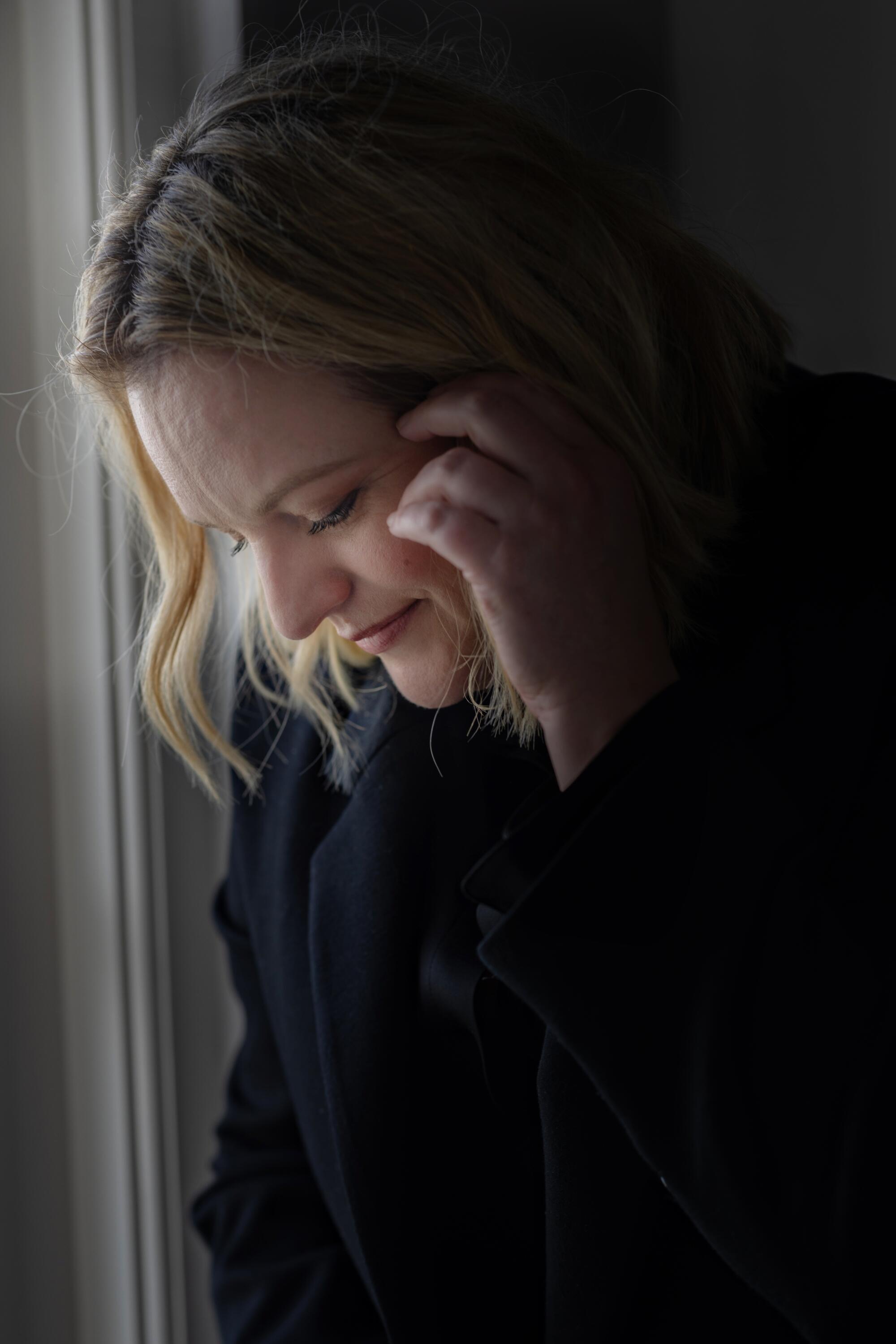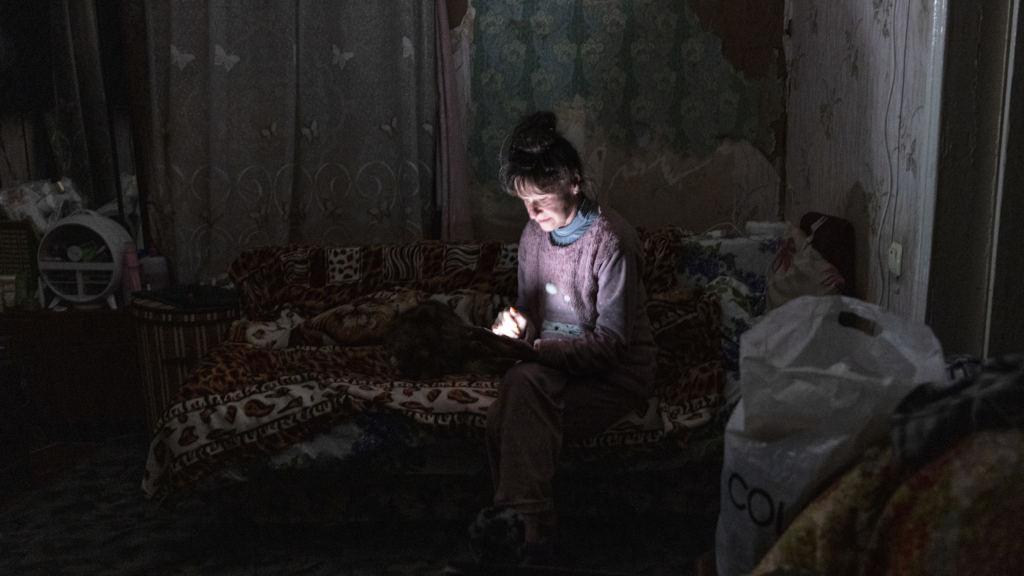Red cloaks. Stiff white bonnets. Bent heads. If there’s a single image that Hulu’s “The Handmaid’s Tale” leaves audiences with as it ends its six-season run this week, it’s this one: That of women in a dystopian anti-America called Gilead, evolving from anonymous sexual slaves into rebels, warriors and, sometimes, survivors.
But for “Handmaid’s” creator Bruce Miller and star Elisabeth Moss, who also directed several episodes in the final season, the series, based on the 1985 book by Margaret Atwood, was never about what the women wore. It was about the women inside the color-coded uniforms.
“June started out as a normal person, a mom, a wife,” says Moss, whose other long-running roles include “The West Wing” and “Mad Men.” She won an Emmy for playing the “Handmaid’s” title character in 2017, the same year the show took home the first drama series prize for a streaming show.
“Then [June] had to shut down and become something that I don’t think she wasn’t proud of,” Moss continues. “But I feel she comes out of that into a place of true heroism, where she is able to be herself, be generous, forgive, inspire other people, lead — but also be vulnerable, ask questions, not know everything.”
Elisabeth Moss in the series finale of “The Handmaid’s Tale.”
(Steve Wilkie / Disney)
Miller, who stepped back from showrunning duties for the final season, with Eric Tuchman and Yahlin Chang taking over, especially wanted to ensure that as a man, he was telling a female-forward story from the female point of view — both in the writers’ room and on camera.
“I’m very mindful of the fact that I’m a boy, and who do I think I am?” he says, adding that winning the Emmy boosted his confidence in being a man telling a story about women’s rights. (The series has 15 Emmys total.) “Definitely, when you win an Emmy it helps you feel a bit less like you have one penis over the limit.”
Knowing that, Miller says he centered the story on June and Moss alike, adjusting camera angles to focus on her point of view — but lowered to an eye level that corresponded with the actress’ 5-foot-3 height. “The crowd scenes get much more scary” when you do that, he says. “I want to see the world not just through June’s eyes — but also Lizzie’s eyes, as much as she’s able to show me those things.”
Meanwhile, Moss used roles as executive producer and director to focus on the show’s look and how June came across on camera. Frequently, she’s shown smoldering with fury or dark intent, gazing up from under her brows with a lowered chin, something Moss says she lifted from Stanley Kubrick’s films. “That is ‘Clockwork Orange,’” she says. “I am certainly not the first person to do that look.”

Elisabeth Moss.
(Jason Armond / Los Angeles Times)
But she might be one of very few actresses to convey it onscreen. “It’s definitely not something women do [on camera],” she says. “Women aren’t allowed to get angry. [June] uses her anger and weaponizes it at so many points during the show — and by the final season, she knows when to do that and when not to.”
The journey June, Elisabeth and “Handmaid’s” have been on began at an uncomfortably synergistic time in American politics: Amid the airing of a series about women subject to state regulation of their bodily autonomy, real-world politicians were successfully rolling back women’s reproductive rights. In 2018, protestors began showing up at real-world events in those handmaid-red cloaks and white bonnets, putting the show in an unexpected spotlight.
“Art does have an impact,” says Moss about that kind of a response, but suggests that repurposing the show’s images, outfits or story in service of real-world politics misses a key element of the series. “I don’t think any of us necessarily set out, when you’re making a TV show, to [make a political statement], because that’s the wrong way to go about it. You’re telling this one woman’s story. … It’s always been ‘The Handmaid’s Tale,’ her story.”
That’s one reason why after six seasons the series chose to end as it did: With June back in the house where it all began, starting her memoirs — “The Handmaid’s Tale.” When Miller pitched that final episode script, Moss says it made her cry.
“I love the idea that at the end is when she starts to tell the story that is the book, and the circular nature of that gives me chills,” she says. “The fact that she realizes that she has to tell it because it wasn’t all bad.”
But the ending also does one more thing: It shows how little is truly resolved. June’s daughter Hannah is still trapped in Gilead, for example. And fans of the series know the action will pick up 15 years later when “The Testaments,” based on a 2019 sequel by Atwood and now in production, begins airing. (Moss won’t say whether she’ll cameo.)
So this is an ending — just not the ending. Now, the story leaves off, still focused on the woman who escaped the bonnet and cloak and not about the trappings of her enslavement. “For me, the ending is perfect,” says Moss. “I also don’t feel like it is an ending. The war is not over. June’s journey is not over.”
